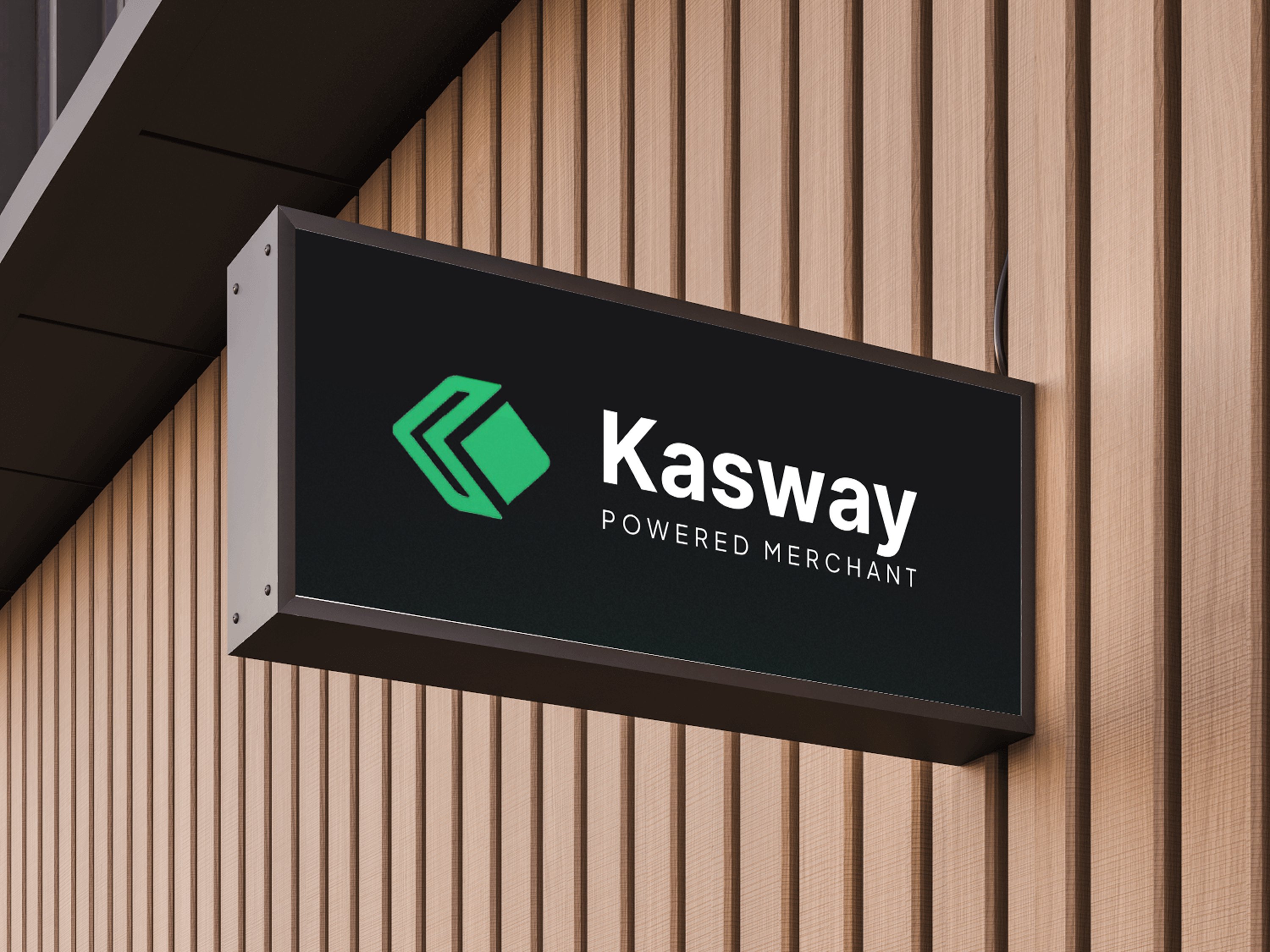As Kaspa's ecosystem matures, the demand for real-world crypto payment solutions has never been greater. Enter Kasway—a decentralized Point-of-Sale (PoS) system being developed by the independent and highly competent team at Atomik Labs. Originally prototyped on Solana, the project was rebuilt from the ground up for Kaspa to fully harness its unmatched speed, uptime, and fee-less architecture. But Kasway isn't just a PoS app—it's an evolving effort to make KAS a practical, everyday currency.
Frustrated by the limitations of existing tools, the team built their own wallet and payment engine, designed for real-world use, offering features such as retry protection, real-time fiat conversion, PDA-style address generation, and seamless multi-device support. With zero KYC, no custodial lockups, and a refreshingly honest approach to product development, Kasway is being built for users, not to take advantage of them.
While still in active development and testing, the vision is clear: to create the best crypto-native PoS system, which not only complements fiat but eventually plans to replace it with KAS.
We caught up with the Kasway team to hear how it all came together—the rebuild, the roadblocks, and their mission to make KAS more than just an asset but a currency people can actually use.
We're excited to watch the project continue to take shape. Be sure to follow @kaswaypos on X, and reach out if you'd like to learn more or support the build.

The Current State of Kasway
Jennifer: The Kasway platform went from being an idea to the mainnet launch in what seems like a matter of months. Can you tell us a little bit about this journey—from ideation to launch?
Kasway Team: Kasway was initially built on Solana and was called Solpos, built using Solana Pay SDK and its QR Standard. It has been undergoing extensive research, development, and testing for quite a while, so the idea is not new. The main focus is to facilitate merchants who want to have full control over their business across regions where it is currently not possible to use a raw P2P wallet transaction.
Most people need to print out their QR codes on paper, but when your business needs to scale and grow bigger, there is no efficient way to monitor your revenue. For example, employees can print out their own QR code and use it between each transaction, so a portion of the revenue is deposited into their own wallet address. You cannot track this fraud without actually delegating the task to someone you trust to monitor your employees.
The MVP has been completed and is ready to deploy; however, we have identified a congestion issue that raises concerns about its reliability. Confirmation time, finality, and centralization were also issues back then, so I sought an alternative solution.
I have been on the Kaspa Discord for about a year and have discovered that Testnet-11 is blazingly fast, inexpensive, and has zero downtime. I thought that we could utilize it as a foundation. We rewrote our implementation on Kaspa, attempting to mimic the existing behavior as closely as possible, and tested it on that network. We then waited until Crescendo was released on Mainnet.
The idea solidified as we realized that Kaspa adoption is limited to traders and investors only, and the vision of the currency as a medium of exchange (Akin to Silver) hasn't been properly executed. Nobody uses KAS for actual payments other than to gamble on DEX/CEX or KRC-20. That is another reason why we chose KAS as the primary currency of our program. We want people to see Kaspa as a genuine currency, not just a store of value like Bitcoin or a gas token like Solana, Ethereum, Sui, and others.
Jennifer: What were the most valuable takeaways from the testnet that helped shape the mainnet launch?
Kasway Team: We are facing problems onboarding people to test the testnet, as there is only Kaspium available at the time to perform the QR scan for payment. Connecting to the testnet in that app requires asking the community for an IP address. We announced the testnet release back then only to realize that the IP address went offline or changed, so there is no way for people to test out the payment feature.
The UX is not great for testing, so we need to improvise. We created our own wallet, called Atomik, as a temporary solution for the community to test the payment feature, and we received a lot of feedback regarding how we implemented address derivation. It was completely wrong, and we didn't know that until someone pointed out that the generated address is very different from the existing wallets out there.
Jennifer: What are the biggest technical or UX challenges you've had to solve so far?
Kasway Team: To make the QR work without needing to partner with every single wallet developer out there. We need to learn how each wallet parses the code and populates the input fields with the values so that merchants' customers won't need to manually set the amount to be transferred.
SDK compatibility was also an issue, as it is built upon WebAssembly (WASM) technology that requires proper initialization. Most open-source solutions are written using React, while our expertise lies in Vue, so we need to determine how to achieve the same functionality in our tool.
We tried different methods from composables (hooks, in React world) and class-based dependency injection, but that didn't or just partially worked until we found a more stable and reliable solution using the Provide / Inject mechanism that is served by our framework and used the SDK as a plugin, instead of consuming it directly in our code.
Jennifer: How do you handle failed payments or recoverable transactions?
Kasway Team: By utilizing the Program Derived Address mechanism. Every payment address has its own key pair, in which the private keys are encrypted and only visible to the merchant.
It keeps it there until the payments are finalized by the network or canceled by the cashier.
In the event of payment failure, the transaction can still be recoverable by allowing merchants to decrypt their PDA's private key and perform recovery actions, such as retrying the payment and Issuing a Refund.
Jennifer: Kasway is free to use, aside from a flat fee of .25 KAS. Do you think this model will be sustainable in the future without outside support?
Kasway Team: No. Not for the short term, at least.
We have been running at a loss, out of our pocket, since the mainnet launch.
Luckily, we have received some generous donations from the community, which will enable us to run for at least a year and focus on the research and development of the new protocol.
Our first milestone is to achieve at least 100 transactions daily, which will enable us to become slightly profitable. We also plan to share the revenue to Kaspa devfund in the future so they can iterate Kaspa development faster, if possible.
Jennifer: Why did you decide to create an in-browser-only application?
Kasway Team: Because browser applications are the most mainstream, easy-to-use platform for Web3 users. It allows us to iterate faster without worrying about major compatibility issues that can arise with native apps.
It also has native support for the WASM, so we don't need to rewrite the existing APIs like Kaspium does, which is beyond our expertise and might lead to more issues than benefits.
We also don't have a wallet standard available, such as WalletConnect, that is available on other chains, which makes connecting wallets through mobile apps not possible at the time of this writing.
.png)
The Future of Kasway and Decentralized E-Commerce
Jennifer: What's next for Kasway in the coming months? What new features or upgrades are you most excited about that are planned or in development?
Kasway Team: We are focusing on the new protocol to allow micropayments through the KIP-10 that, currently, no one (in the ecosystem) has ever successfully implemented. We plan to return to our Atomik wallet to create a prototype of the new protocol until we find a working implementation for micropayment transactions. We may also create an SDK and introduce a QR Standard in Kaspa, making it open-source to help other wallet developers contribute and integrate with their existing codebases.
Besides micropayments, we also plan to replace our PDA mechanism with a fully on-chain solution to increase decentralization, probably by utilizing a P2SH and opcodes mentioned in the KIP proposals.
After that, we plan to focus on adding support for stablecoins through EVM L2 solutions, such as Kasplex and Igra, as a temporary workaround until we have a canonical bridge in our network. Then, focus on more mature third-party integrations for everyone to begin the transition.
We have also received some feedback from the community to make it work natively as a mobile app, as the current web experience on mobile browsers feels clunky. So we plan to make it as well.
Next, we may expand to the IoT sector to unlock even more real-world use cases for Kaspa as the world becomes more aware of what it can achieve.
Jennifer: How do you envision the future of decentralized e-commerce, and what role will Kasway play in that landscape?
Kasway Team: The future of decentralized e-commerce is about putting power back into the hands of creators, sellers, and consumers. We're moving toward a landscape where intermediaries no longer dictate the terms, allowing ownership, data, and profits to be distributed more equitably. Blockchain and Web3 technologies enable transparency, trust, and autonomy on a scale never seen before in retail.
At Kasway, we see ourselves as a catalyst in this shift. Our role is to provide a platform where communities can build their own marketplaces governed by shared incentives rather than centralized policies. By integrating a decentralized payment system, Kasway is shaping a new model of commerce — one where every participant, from seller to affiliate to customer, has a stake in the ecosystem.
We're not just adapting to the decentralized future; we're helping to build it.
Jennifer: Do you think you'd like to build a decentralized platform that functions like eBay or Shop?
Kasway Team: Probably. However, we want Kasway to be more like a solution that gives more developers a chance to build this kind of app in our ecosystem more quickly and easily. Think of it like Igra and Kasplex, which allows developers to build apps on their platforms.
Jennifer: Are there any plans to integrate KRC-20 tokens or other Kaspa ecosystem tools into the marketplace? Why did you decide never to make a native Kasway token?
Kasway Team: To be honest, after reading and discussing KIP-10 thoroughly in the Kaspa #development channel. We are not sure. We are at a crossroads here. We want to build something for the community, but we don't want people to think this project was created solely for a quick cash grab or a pump-and-dump scheme.
The reason we say we will never create a native Kasway token at that time is that we don't yet understand the implications that KIP-10 brings to our current business model. We admit that we missed this aspect in our initial research. And we (naively) want KAS to be globally seen as the next "money"... Something that is too good to be true for us at the moment.
The current business model utilizes a PDA, which enables us to charge a service fee. But after the new protocol arrives, things might change. We may need to introduce our own token for the community to invest in, open-source the POS code completely, and add an option for the community to self-host it. Additionally, we can introduce tokenomic shares to keep the hosted infrastructure online and to fund the start of the expansion, as mentioned earlier.
Jennifer: You are researching Visa, Mastercard, NFC, BTC Lightning, and automatic fiat-to-Kaspa conversion. Do you see your solution gaining traction as a crypto payments platform, regardless of which blockchain network it's connected to?
Kasway Team: Yes. Our approach prioritizes user experience and broad compatibility, which helps it stand out.
Jennifer: Kastle Wallet is already integrated with Kasway. What should other wallet providers know if they're looking to integrate with your platform?
Kasway Team: There are two ways to integrate into our platform. And it is actually pretty simple and straightforward:
As an identity of the merchant to authenticate
As a tool for customers to make payment
For point number 1
Wallets need to have an SDK that we can use to connect their app to the website. Kastle and Kasware have good examples for you to see.
For point number 2
Scan the QR code; it uses a classic URL scheme that you can parse and put each fragment to its designated location. For example, when scanning the QR code, it will show something similar
to this:
```
kaspatest:abcd…xyz?amount=100&ticker=KAS
```
Split it by the '?' (question mark), and put the address on the address field and the amount in the amount field, the ticker, to get which coins should be consumed (can be omitted for KAS).
It would be even better if wallets could have an extra page to specifically handle this operation in the background without displaying any inputs. So that users can't be too creative in changing its value to whatever they want because the PDA will not allow them to pass anyway.
Allowing users to change the amount means allowing their funds to be stuck inside the PDA.
Jennifer: Speaking of wallets, you are working on your own wallet with plans to make it open-source. Can you tell us more about that?
Kasway Team: Yes, it is already open source. You can visit the repo here:
https://github.com/Atomik-Global/atomik-wallet
As mentioned before, we created this wallet as a temporary solution because setting up Kaspium on Testnet was painful for non-technical users (obtaining the IP address versus tapping on the network option).
We will use this wallet to create prototypes and experiment with our testnet protocol, as well as demonstrate examples of how to integrate with future ecosystem projects.
Although we could continue developing the wallet itself, we decided not to do so and instead let the community take the lead. We don't want to monopolize the ecosystem. We're a small team, and we don't have the time, funds, or expertise for that.
Jennifer: You recently mentioned plans for a community-driven liquidity pool to support staking and merchant KAS sales via L2. Can you share more about how that would work?
Kasway Team: Yes.
This plan is primarily aimed at mitigating regulatory issues in countries such as Indonesia, where crypto payments are completely prohibited. They must be treated as just a commodity or asset.
The main problem here is that You can't pay using KAS, but you can buy or sell KAS.
The idea is to create a community-driven, smart-contract-based liquidity pool that enables communities to stake their KAS and receive an additional KAS reward from our service fee for payments made directly using KAS.
Meanwhile, we act as a broker behind the scenes and partner with banks to enable merchants to optionally accept fiat transactions within our Bank account and create a buy-sell rotation to the pool using fiat fees when merchants decide not to convert them to KAS.
If, instead, the merchant wants to convert their fiat to KAS, we use KAS from the liquidity pool.
When they sell KAS to us, we give them the money and put their KAS back into the pool. This creates loops that we think would solve the liquidity issue.
This was just a random thought that we think may be a good idea to boost adoption if planned properly and carefully.

Kasway and the Kaspa Community
Jennifer: How does launching the first decentralized PoS on Kaspa move the needle toward broader merchant adoption of KAS?
Kasway Team: We show them (the world) how fast, cheap, and reliable it is (Kaspa) compared to any other chains.
We made the fee as low as possible, to the point that it is almost free, and the UX as comfortable and seamless as possible so that merchants can manage and run their cross-border businesses without worrying about printed QR fraud.
As you know, currently, the only merchants are those who are trying to push society into using KAS as the payment currency. The rest are just a trading guy looking at red and green candlesticks. The price isn't going anywhere because it's less valuable than fiat (numerical-wise), and no retailers want to buy it.
If we make a merchant's life even easier, it will indirectly affect how merchants think about Kaspa and encourage them to recommend it to many other merchants.
And if every merchant wants and prefers KAS, less fiat will be used. This may sound naive, but nothing is impossible.
Jennifer: Do you see Kasway as a tool to boost Kaspa adoption among non-crypto-native users?
Kasway Team: Not directly. We need to develop a plan in collaboration with the merchants and the community.
Jennifer: How are Kasway and Kaspa fulfilling the original vision of Satoshi and Bitcoin?
Kasway Team: It (Kasway) does not.
It was Kaspa and the community who did that. We are simply providing a tool to facilitate the transition from traditional finance to decentralized finance.
Enjoyed reading this article?
More articles like thisComments
No comments yet!




